The capital of the Italian region of Tuscany, Florence was the staging and focal point for the Italian Renaissance, a period of artistic, literary and architectural rebirth (renaissance means rebirth). It was a period from around the end of the 14th century until the early 17th century, with the period of so-called High Renaissance in art lasting for a 30 year period from about 1490, a period dominated by the everyone-has-heard-of-them artists like Leonardo Da Vinci (The Mona Lisa, The Last Supper), Raphael, and Michelangelo (Ceiling of the Sistine Chapel, statue of David). Evidence of the city’s 600 years of extraordinary artistic activity is everywhere, meaning a Renaissance assault on the city may very well lead to a Renaissance migraine. It did for me.
Piazza della Repubilica & Loggia della Signoria
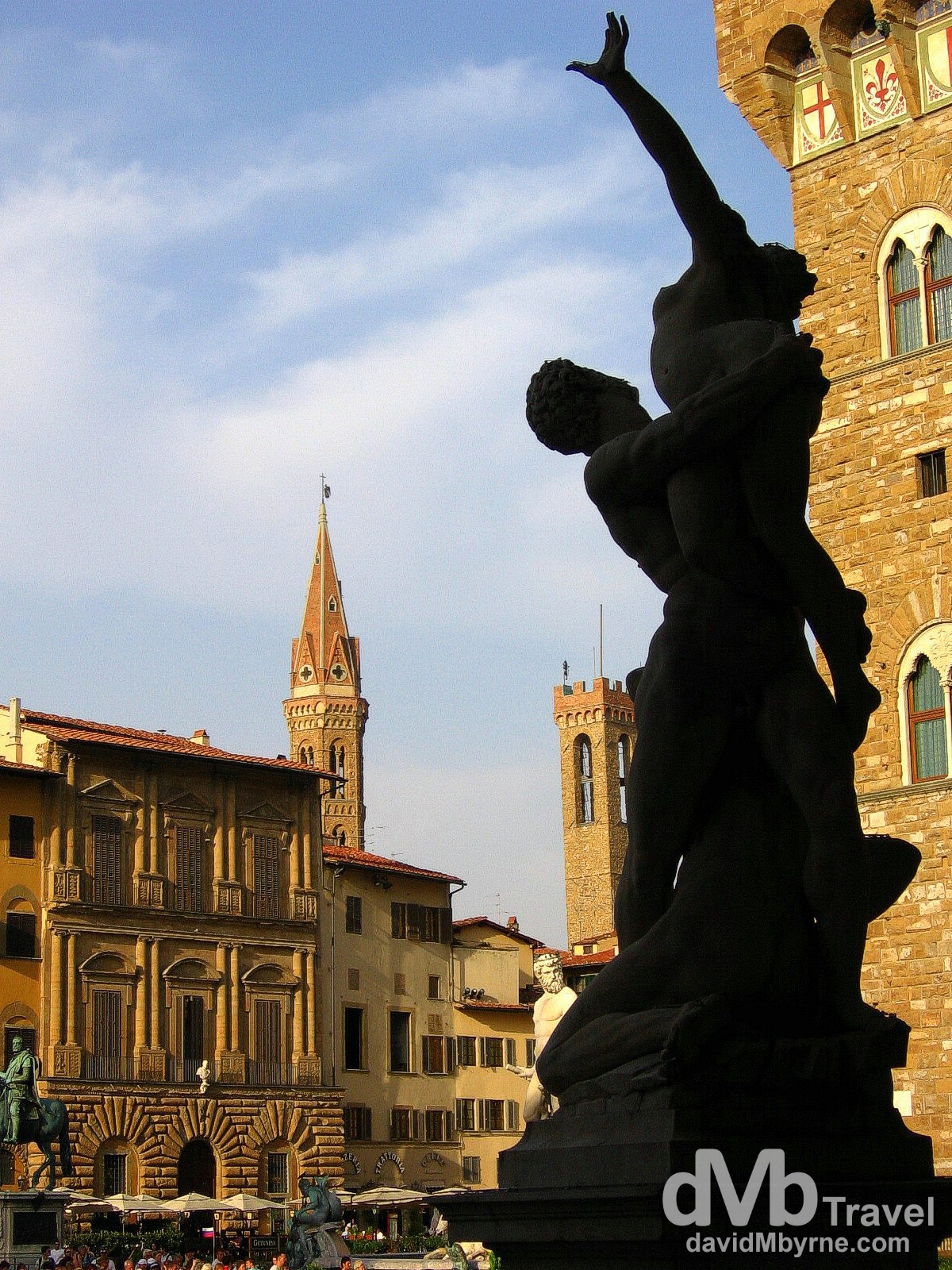
A silhouette of a statue in the Loggia della Signoria overlooking the photogenic Piazza della Signoria in Florence. The piazza is the city’s main civic square located in the middle of the UNESCO World Heritage-listed Historic Centre of Florence. It is surrounded by an array of impressive buildings, including the Town Hall, seen to the right. It’s a nice place to hang out and considering its prime location it has some reasonably priced cafés and restaurants. The square also feels like something of an open-air museum thanks to the array of Renaissance statues found both in the square and in the adjacent Loggia della Signoria (see next picture). Piazza della Signoria, Florence (![]() ), Tuscany, Italy. August 28th, 2007.
), Tuscany, Italy. August 28th, 2007.
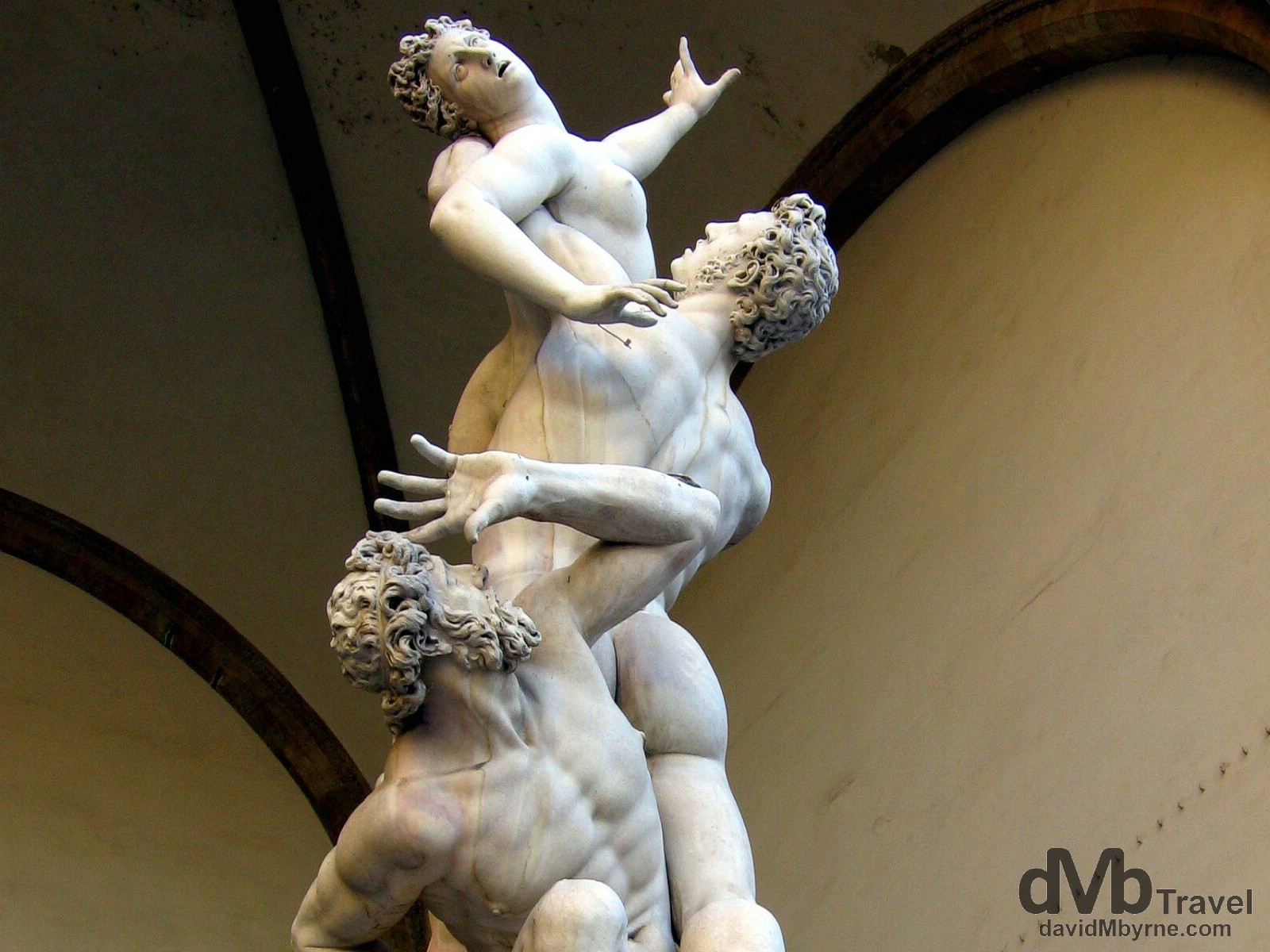
Although Piazza della Signoria’s Loggia della Signoria, a loggia being a roofed gallery or balcony, was built in the late 14th century as a dais for city officials during ceremonies, it was only in the late 18th century that it become what it is today – a showcase for some of the city’s more melodramatic sculptures, one of which is seen here, the Rape of the Sabine Women. Created by a sculptor called Giambologna, it was sculpted in the contorted form – called a Serpentine Spiral – a style popular in the day & a style that was immensely difficult to sculpt. Most of the sculptures in the loggia are copies or recasts of originals except for the Rape of the Sabine Women – this is the original and it has been here on display in the loggia since its completion in 1583. Loggia della Signoria, Florence, Tuscany, Italy. August 28th, 2007.
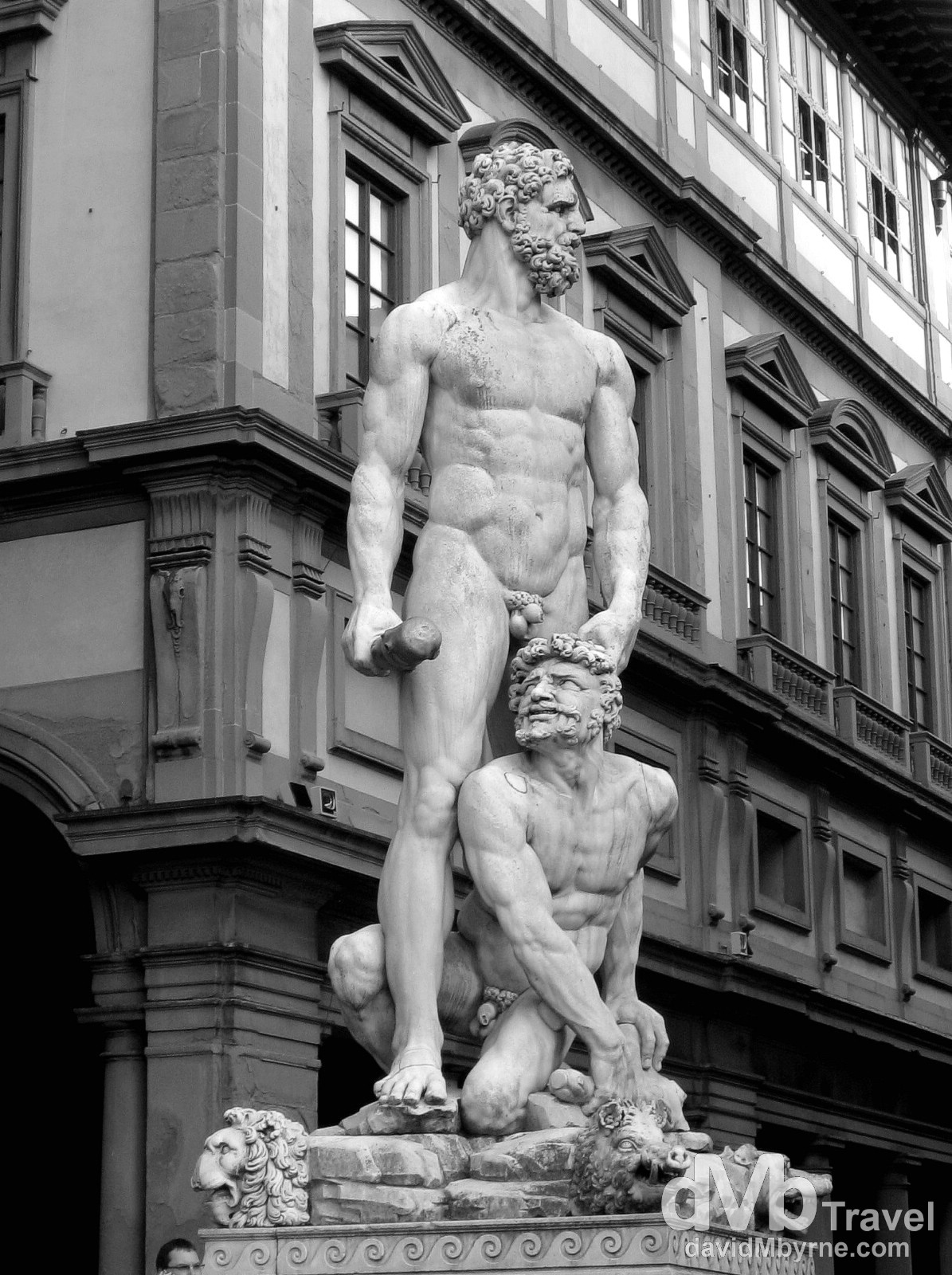
A statue fronting the Uffizi Gallery in Piazza della Signoria, Florence, Tuscany, Italy. August 28th, 2007.

Street performers fronting the Loggia della Signoria in Piazza della Signoria, Florence, Tuscany, Italy. August 28th, 2007.

Late evening sunlight in a narrow lane off Piazza della Repubilica, Florence, Italy. August 28th 2007.
Ponte Vecchio
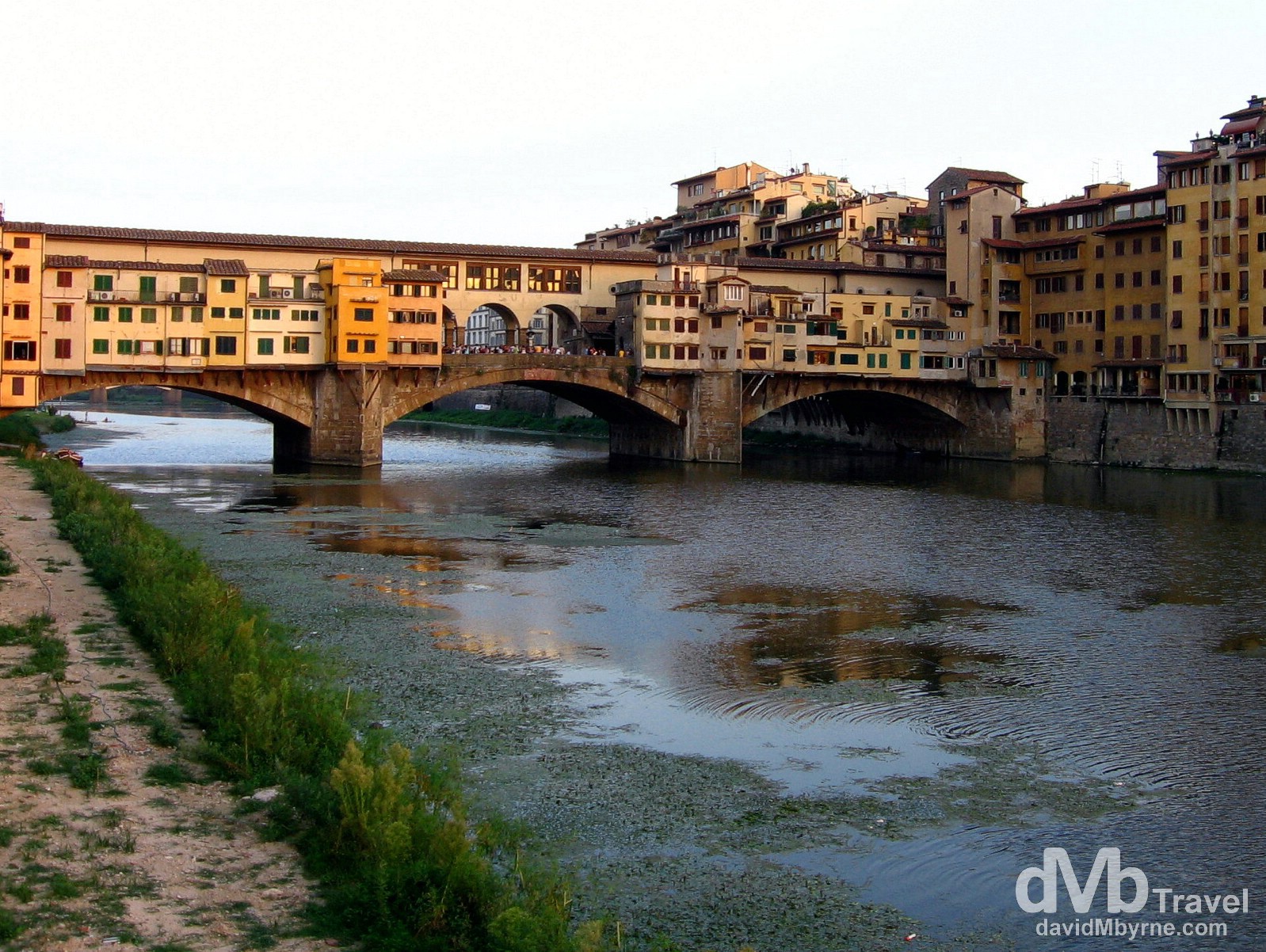
One of the more recognisable sights in Florence is the medieval Ponte Vecchio (Vecchio bridge) spanning the city’s Arno River. Some class it as picturesque and I guess it is, from a distance. Up close I found it a somewhat confused jumble of concrete lined as it is with tacky jewellery shops and always swarming with tourists. Its claim to fame is that it was the only bridge in the city that the retreating German army failed to blow up during World War II. Ponte Vecchio Bridge, Florence, Tuscany, Italy. August 28th, 2007.

Reflections on the Arno River as seen from the Ponte Vecchio, Florence, Tuscany, Italy. August 30th, 2007.
Florence Cathedral & Piazza del Duomo
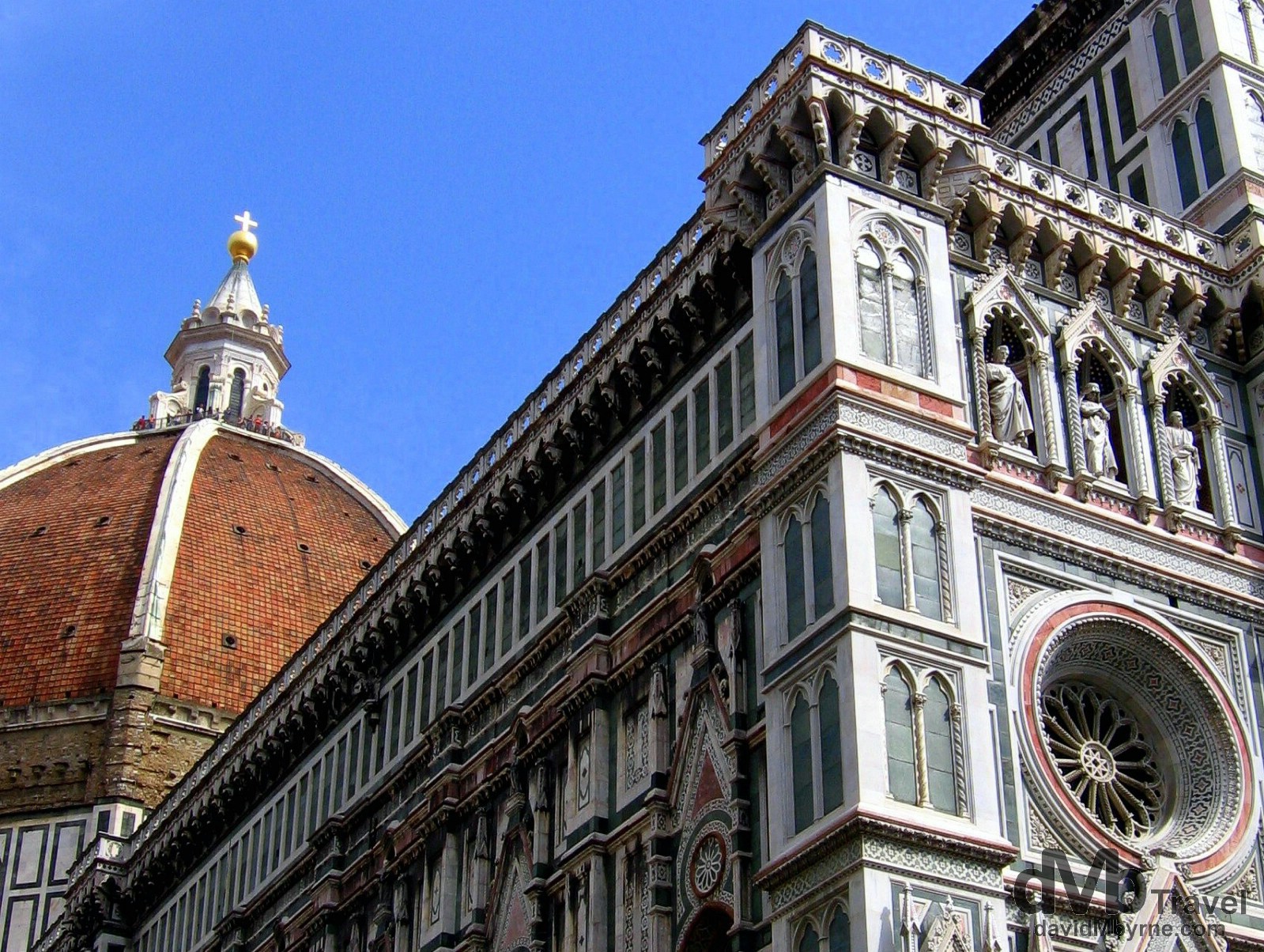
Florence Cathedral, officially Basilica di Santa Maria del Fiore (Basilica of Saint Mary of the Flower), is the most famous building in Florence & the 4th largest church in Europe – it’s over 150 metres long. Construction on it began in 1294 in the Gothic style but it wasn’t consecrated until the 1436 completion of the massive 115-metre high dome – the cathedral’s most striking feature is the largest brick and mortar dome in the world & is visible from all over the city (and city views from the dome’s external lookout deck are impressive – people can be seen atop the dome in this picture). The cathedral is located in Piazza del Duomo which also houses the cathedrals matching 82-metre high campanile (bell tower) and the octagonal Florence Baptistry, the oldest building in city thought to have been built sometime between the 5th and 6th centuries. Many famous Florentines, including Dante, were baptised here. All three buildings of Piazza del Duomo – the Cathedral, Campanile & Baptistery – are part of the UNESCO World Heritage Site covering the historic centre of Florence. Piazza del Dumo, Florence, Tuscany, Italy. August 29th, 2007.
– UNESCO commenting on the Historic Centre of Florence

A section of the overblown and pernickety main facade, comprised of red, white and green marble cladding, of Florence Cathedral in Piazza del Dumo, Florence, Tuscany, Italy. August 29th, 2007.

Bronze door relief sculptures of the Florence Baptistery, Plazza del Dumo, Florence, Tuscany, Italy. August 28th, 2007.
______________________________________________________________________
